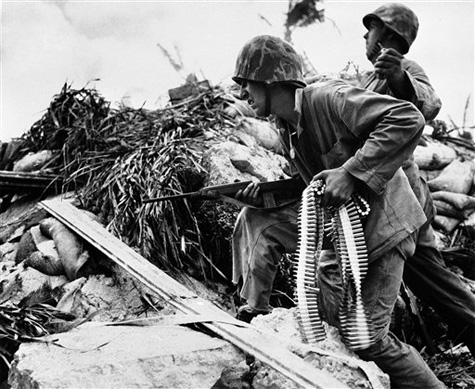Bellingham based archaeologist went searching for the remains of U.S. Marines and soldiers killed in the battle on Tarawa atoll during the Second World War. The man has been working his hands for days on the Pacific sandy beaches littered with trash. He found the experience ‘uncomfortable and challenging’.
Garth Baldwin, aged 43, earned a master’s degree in anthropology from the Western Washington University and served with the Marines for four years. He is currently working with Drayton Archaeology and dealing with military matters and searching for human remains are part of his job. His first time searching for U.S. Marines and soldiers was when he began working at Tarawa. It is also his first time collaborating with the nonprofit Florida organization, History Flight.
The Gilbert Islands, including the Tarawa atoll were captured by the Japanese in 1941. After becoming independent, the islands received a new name, the Republic of Kiribati. The Republic of Kiribati is the only country to occupy all 4 hemispheres and is positioned in the middle between Hawaii and Australia, The Bellingham Herald reports.
The atoll represented an interest for both the U.S. forces and Japan. On its side, the Japanese fortified the area with trenches, tanks, coastal defense guns and brought in 3,000 soldiers and over 2,200 Japanese and Korean laborers.
On the other side, the U.S. put together 35,000 troops and over 100 warships, creating the largest American fleet until that time. The battle began on Nov. 20, 1943 and ended after 76 hours of continuous fighting, killing up to 1,100 Americans and leaving over 2,200 soldiers wounded. Only 145 Japanese died in the attack.
The whole fighting killed around 6,000 soldiers and the burials were meant to be fast. Usually, the Japanese servicemen were buried where they were found, while the Americans were put to rest in over three dozen cemeteries, with some graves containing from a few bodies to dozens of them, put together side-by-side.
Following the end of the war, in 1946, the Americans returned to the site to locate and identify the bodies. The cemeteries, however, were spread in such way that hundreds of bodies remained lost. Today “we need bones that haven’t been DNA-ruined,” in order to identify these fallen men, Baldwin said.
So far, the excavation team has found several objects including a canteen, dog tags, ID bracelets and a pocket knife. They were also able to identify some of the Japanese remains of the dead soldiers.
According to the History Flight website, 500 U.S. dead remain missing.
